The three most common types of wood used for the backs and sides of acoustic guitars are rosewood, mahogany and maple. Each has strengths and weaknesses, both in tone quality and structural integrity. I'll start with rosewood.
That is fairly subjective but one thing is for sure. ALL Brazillian rosewood guitars by Martin, Gibson and others built before 1970 have shot up in price radically in the last few years. Some sound great, some are good but not spectacular. There are other factors involved beyond the materials, things like bracing, top wood grain, finish and a few other things.
Generally, compared to mahogany and maple, rosewood guitars sound much complex with subtle overtones and often a pleasing, soft "waa-waa-waa" sound that sustains for quite a long time. Rosewood is also quite beautiful with various shades of chocolate brown. If there is some "swirl" in modern East Indian rosewood as was common in the Brazilian stuff, so much the better at least in terms of value.
That's "the good." The bad is that rosewood is much more prone to cracking if not properly humidified and the tonality and overall sound can change quite radically on a seasonal basis if you live somewhere with warm, humid summers and cold, dry winters. Also, rosewood rapidly loses its beautiful tonal complexity as the strings go dead. I've heard guitars that cost many, many thousands of dollars that sounded awful with strings that were old but gloriously came to life when new strings were put on. As an example, when I was recording with fiddler Marie Rhines back in the 1970s, during one two-week series of recording sessions I changed the strings on my D-28 four times! And I don't even have particularly sweaty hands - I just wanted my Martin to sound its best for the recording.
I can't tell any difference in the ways that matter, although in some cases mahogany with a gloss finish tends to have more of a quilted look that is quite attractive, while sapele is pretty even and uniform.
Mahogany is less expensive than rosewood and while some might argue this statement, mahogany does not have the complexity of sound that you find with rosewood. It is preferred by many guitarists however because the tone is even, easily controlled and mahogany guitars record very well because those overtones aren't something a recording engineer has to contend with via equalization. Mahogany has a nice punchy sound and usually has better treble than rosewood, although that is not always the case. It is also more durable, less prone to cracking and less affected by changes in humidity. Strings last longer too - unless you happen to have very sweaty hands, a set of strings will sound good three to four times as long on a mahogany guitar compared to rosewood.
Unfortunately, even true vintage mahogany guitars do not have the value of similar rosewood models, even by the same manufacturer. This doesn't mean they are bad instruments - far from it - they just are not generally as desirable in the vintage, used guitar market.
Next time we'll take a look at necks, fronts, fingerboards and bridges.
Peace & good music,
Gene
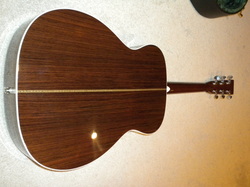
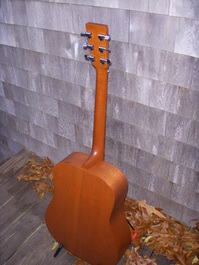
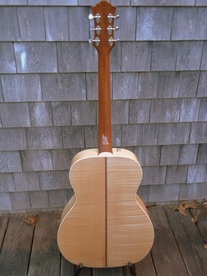
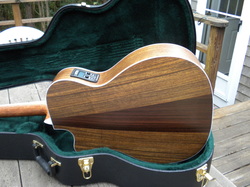
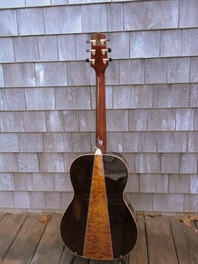
 RSS Feed
RSS Feed